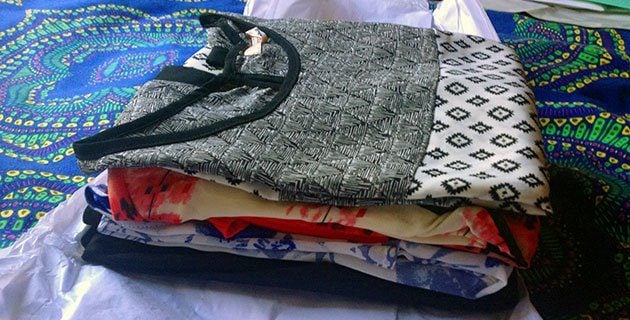
By
Ankitha Bharadwaj
Have you heard of Stitch Fix? It’s a personal shopping service for women that has been gaining popularity lately. It seems simple enough: you answer a few questions, and voila! In a few days, you get a box at your doorstop filled with hand-chosen items specifically for you. This is meant for the lady who loves new clothes, shoes, and accessories, but hates the tediousness of shopping. That’s definitely me.
After much endorsement from a good friend (you know who you are…), I decided to give Stitch Fix a shot. I was pleasantly surprised by how much I liked my first “Fix”. The level of personalization that went into the entire experience impressed me. I couldn’t help but compare my Stitch Fix experience to other services that also attempt to serve me recommended content – i.e., Netflix, Spotify, Amazon. To that end, I think that maybe Stitch Fix nailed it with personalization because of the very human stylists who use all the richness and nuances of human thought and communication to build each order. Let me tell you what I mean…
Step 1: The style profile
First, there’s a questionnaire. This is a series of questions gauging my fashion style. I had to rate on a scale of “love it” to “hate it”, how I felt about a few outfits. This is similar to other services that use onboarding techniques to immediately offer personalized content – like picking your three favorite genres, or your top five favorite artists. Netflix similarly shows its users movies and TV shows that are along the same lines as the ones the users marked with four or five stars.
Along with those rating questions, I also added lots of comments about what I was in the mood for: “I’m looking for business-casual clothes. But nothing that makes me look like a frumpy 50-year-old. But something that gets me taken seriously. But not pants that are too flared. I like floral patterns, but nothing that makes me look like I’m wearing motel art.” Submit.
Step 2: Get excited
This was the hard part. The folks at Stitch Fix took about three weeks to get my Fix ready. The anticipation was palpable. I couldn’t wait to see how my questionnaire answers were interpreted. Fashion has always been extremely subjective and personal, so I was anxious to see how this service handled the wishy-washiness of my answers.
Here’s the rub. With Spotify or Netflix, there’s the instant gratification of seeing content you might love. But I had to wait weeks before seeing what Stitch Fix put together for me. If it were as simple as a few cycles by a computer to put together my Fix, it wouldn’t take almost a month. Stitch Fix’s user experience hinges on the careful hand of human stylists who can parse through potentially nonsensical text to create the perfect Fix.
Step 3: The unboxing
Finally! There it was on my front porch: A cute little brown box with bright blue decorative details. I grabbed it and ran to my room.
Stitch Fix managed to make just opening the box into quite the experience. I felt like everything about the box’s contents was special. Just for me. The personalized note from my stylist was the icing on the top. She congratulated me on my new job, and gave me a few pointers on how to pair my new clothes together with other things I already had in my wardrobe.
I even knew the name of the person who folded these clothes and assembled the box. Something about the fact that two individual humans spent time to think about my quirky questionnaire answers to assemble this perfect box of clothes just made me feel all mushy inside.
And there’s something about the prolonged wait that made that moment even sweeter. I was perfectly content with waiting a little while for a stylist to get her hands on my answers to craft me the perfect Fix. If Stitch Fix used machines to optimize for speedy deliveries, I wonder how many orders would get returned.
Receiving a box from Stitch Fix was very different from getting an Amazon package. Amazon’s box is all business, but Stitch Fix manages to make the same idea of product delivery more fun and engaging.
Step 4: Is it time for another fix yet?
I loved all five items I received. All I had to do was log into my Stitch Fix account and pony up the dough. But before making my payment, I got the chance to provide some feedback about the items. Again, I provided oddly specific feedback. “The dress was great, but the print was a bit too blobby,” I said. “Please do not send any more blobby pieces.”
Why it worked
It’s no surprise that people today prefer, nay EXPECT the tools and services they use to become attuned to them. We’d like for our machines to know what we want even before we do. But can a machine really know what we want? It’s hard to imagine the level of personalization I got from Stitch Fix was the work of some hunk of metal in a back room. But then again, maybe it is. Maybe Stitch Fix has nailed the user experience, making a seemingly human interaction totally computerized. Maybe this was my very own Turing Test, and I could not tell the human and the computer apart. And I loved it.
Ankitha Bharadwaj works in user research at Blink UX. She’s a doer and a trier, and spends her free time thinking about how we know what we know is, in fact, the truth.
